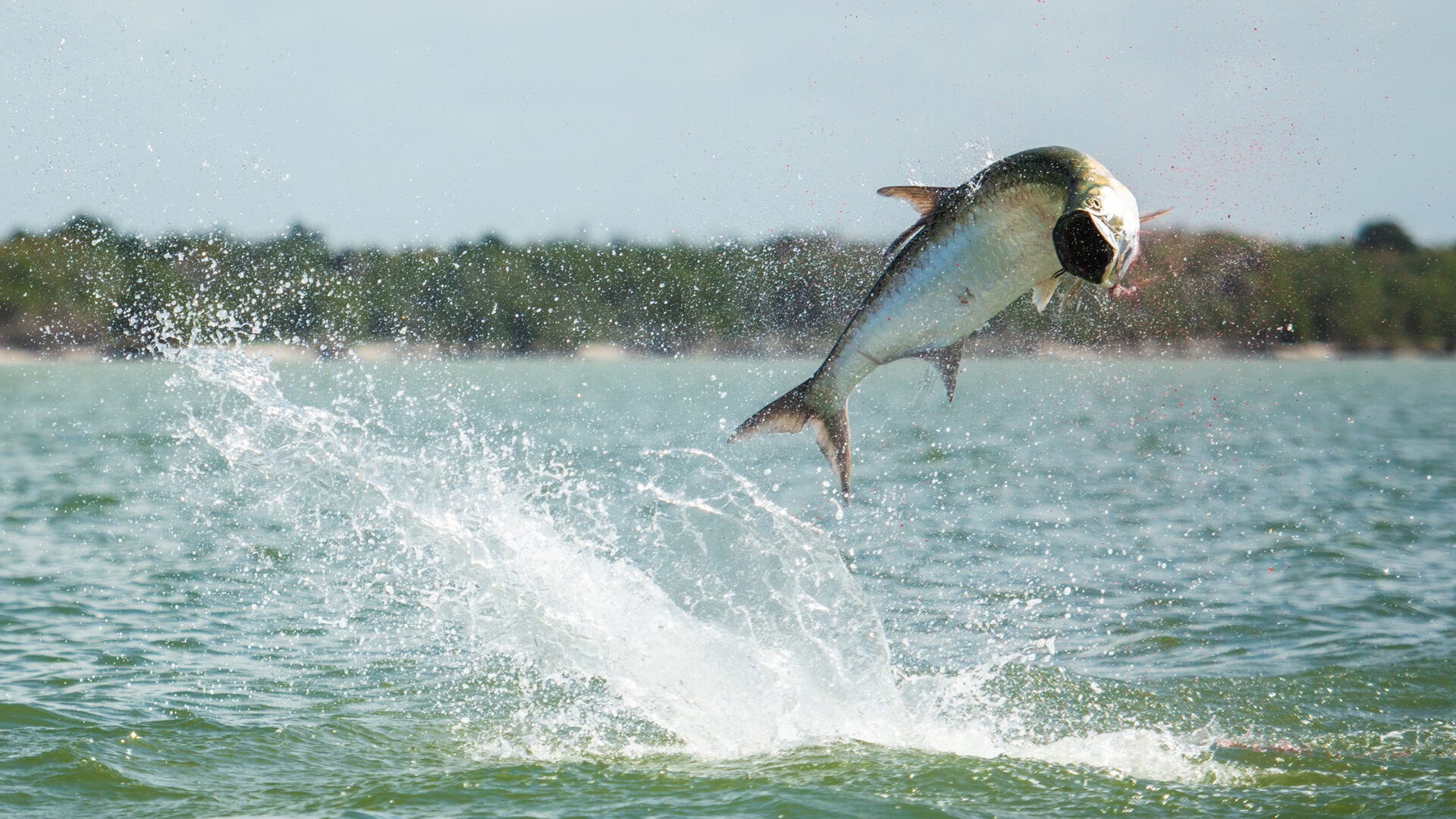
Fly Fish Key West Tarpon
Catching a tarpon on fly is one of the most exciting experiences in all outdoor sports.
Tarpon have earned their reputation as the favorite fish of many because of their size, acrobatics, and willingness to eat flies. When the water temperature is between 72 and 85 degrees and the weather is stable, tarpon show up in the Lower Florida Keys and Key West en masse to rest and feed before continuing their migration north. In the spring and summer, tarpon can be found rolling in current, laying up in the backcountry basins, sliding along the Gulf banks, and swimming the edges of the Ocean flats. These fish can be caught using conventional tackle, but most anglers in the know realize the allure of catching them on the fly.
Tarpon season usually means the earliest mornings of the year when boat rides in the dark are not uncommon. Tarpon have a tendency to roll more in low light which gives anglers the chance to know where they are and get a fly in front of them. Quick accurate casts are needed to place the fly directly in front of fish immediately after they roll and slowly sliding a fly through their path is a great way to entice a bite.
As the sun rises, and the rolling activity subsides, the increase in visibility will open up options on what to do next. In the early spring when the water temperature is still cool, fish can be found laid up in the backcountry. These fish float motionless, high in the water column, and are opportunistic biters of a fly placed a foot in front of and a foot past their head and slid by their face. Later in the spring and early summer when the water temperature is warm, tarpon can be found swimming the Gulf banks and Oceanside flats in singles, small groups, and large schools. In the peak of tarpon season, it is not uncommon to see hundreds of tarpon per day. A fly placed ahead of swimming fish and slid into a position where the fish swims into it is a good way to get a bite from a moving fish.
Most tarpon anglers in Key West use 10, 11, and 12 weight rods with the biggest reels that money can buy. Ninety five percent of the time, a weight forward floating fly line gets the job done, but there is a time and place for throwing an intermediate line. Flies of natural colors that resemble baitfish, crabs, shrimp, and palolo worms all have their uses.
Those who want to specifically target tarpon usually want to fish mid-March through July although tarpon of all sizes can be caught year-round when the conditions are right. Tarpon season is the busiest time of year in the Lower Keys and Key West and most guides book a year in advance.


